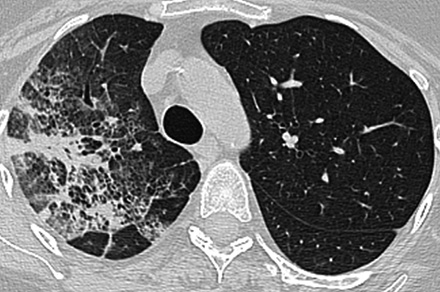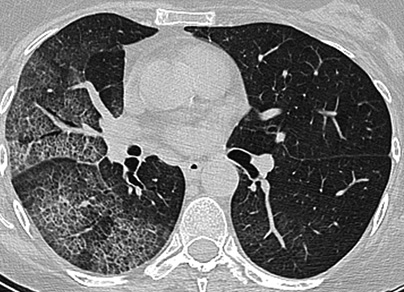Exogenous lipoid pneumonia occurs following inhalation of mineral oils or aspiration of certain animal or vegetable oils. Fatty acids accumulate in the lung parenchyma resulting in inflammation, which can cause focal fibrosis. Endogenous (idiopathic) lipoid pneumonia also occurs with accumulation of lipids in the alveoli. HRCT in both forms show a mixture of ground-glass, crazy paving and consolidation. Distribution may be unilateral or bilateral, and sometimes the condition remains relatively unchanged. There is no cure. Lipoid pneumonia is a rare disease and diagnosis is confirmed by biopsy (Figures 33, 134).
Figure 134. A and B. Middle-aged woman who developed biopsy-verified lipoid pneumonia. The changes consist of ground-glass and crazy paving with elements of consolidation. The CT-findings remained relatively unchanged for several years. This was diagnosed as endogenous lipoid pneumonia.


Figure 134. A and B. Middle-aged woman who developed biopsy-verified lipoid pneumonia. The changes consist of ground-glass and crazy paving with elements of consolidation. The CT-findings remained relatively unchanged for several years. This was diagnosed as endogenous lipoid pneumonia.